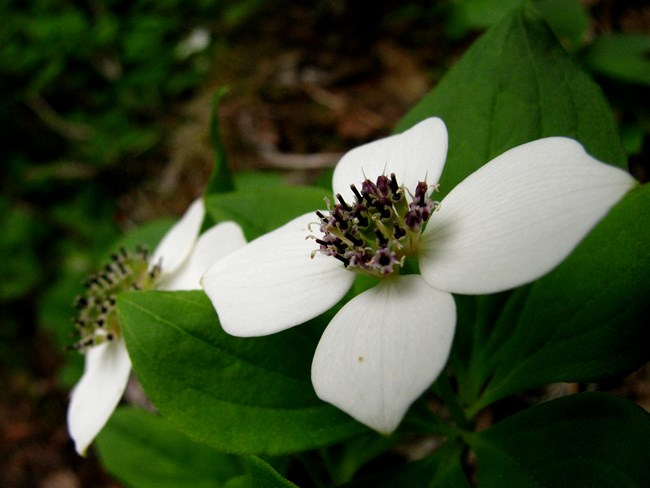
NPS photo/K. Unertl The low rainfall produces a special environment for plants and animals. It can get dry enough in the Taiya and Skagway valleys that forest fires occur, something unheard of throughout the rest of southeast Alaska. Plants and animals that expand from the interior into the Klondike Gold Rush National Historical Park valleys find conditions that with some characteristics of the temperate rainforest (but much less extreme than most of the southeast Alaska coastal rainforest), and with some characteristics of the drier, interior ecosystem.
Learn More!
Planning a visit to see wildflowers? You are allowed to pick edible fruits for your own consumption - but please be careful. Be warned that eating wild plants can be hazardous, as there are some deadly poisonous plants lurking around! These include water hemlock, baneberry, and amanita mushrooms. Please look them up and know what they look like before you attempt to collect and consume wild plants. If you want to explore the Dyea tidal flats, check the tide tables first! |
Last updated: May 25, 2017
